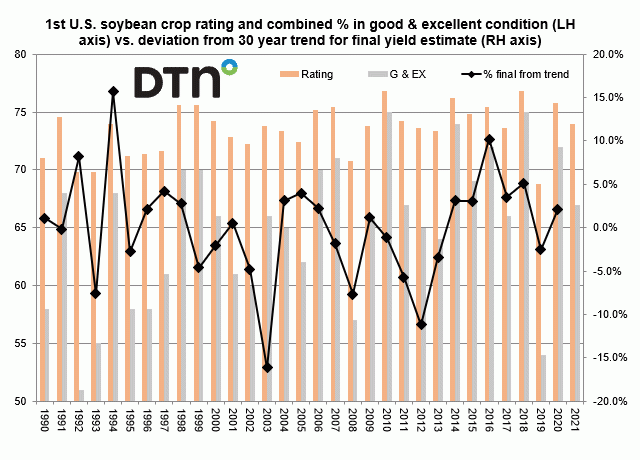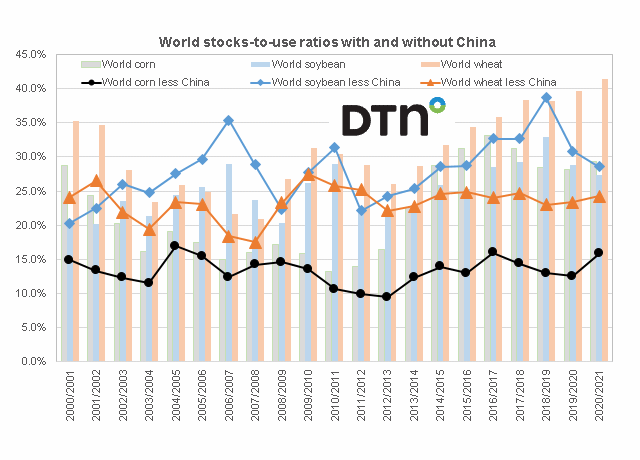Fundamentally Speaking
First Look at 2020/21 Global Stocks-to-Use Ratios
Given retrenched global demand for grain and oilseeds in the wake of the pandemic and U.S. corn and soybean production prospects looking good so far this growing season, it will be difficult to mount any sort of rally especially given a backdrop of adequate if not burdensome global inventories of corn, soybeans and wheat.
This point was reflected in the first world supply-demand figures given in the May 2020 WASDE report where USDA reported on the balance sheets for the various commodities on both a domestic and global basis.
This graphic shows the world stocks-to-use ratio of corn, soybeans and wheat with and without China.
P[L1] D[0x0] M[300x250] OOP[F] ADUNIT[] T[]
The reason for this is China possesses well over half of global corn and wheat stocks and over 25% of global soybean inventories, yet these stay internal and are not traded on the world markets for the most part.
This year's world corn stocks-to-use ratio of 29.4%, up from 28.1% last year, and other than three-year period from 2015-18, this is the highest ratio since at least the 1998/99 season.
Excluding China, the world corn stocks-to-use ratio is 15.8%, up from 12.5% this season, and other than the 16% ratio seen in 2016/17, would be the highest since 2004/05.
Soybeans may have the tightest situation though that is a stretch as projected ending global stocks of this oilseed for the 2020/21 marketing year at 98.4 million tonnes is about the third highest ever and though the calculated stocks-to-use ratio at 27.3% is the lowest since the 2015/16 season, it is still above the 26.5% ten year average.
Note that ratio less China at 28.5% is the lowest in seven years.
Clearly, the most bearish situation is with wheat where for the second year in a row the world stocks-to-use ratio has climbed to record levels, now at 41.4% although minus China is at 24.2%, slightly above the ten-year average of 23.9%.
Corn and wheat stocks both on a global basis and minus China are fully adequate and though the soybean stocks-to-use ratio may be tightening, it remains at comfortable levels.
Furthermore there are expectations for a larger U.S. crop than the USDA is projecting and doubts whether the forecasted 3.8% increase in global soybean demand comes to fruition.
© (c) Copyright 2020 DTN, LLC. All rights reserved.






Comments
To comment, please Log In or Join our Community .